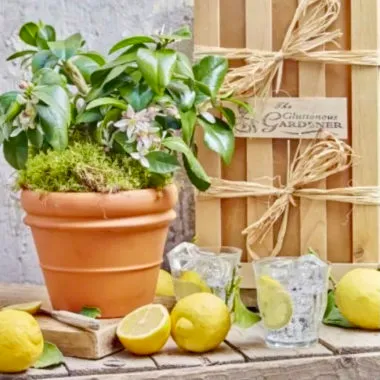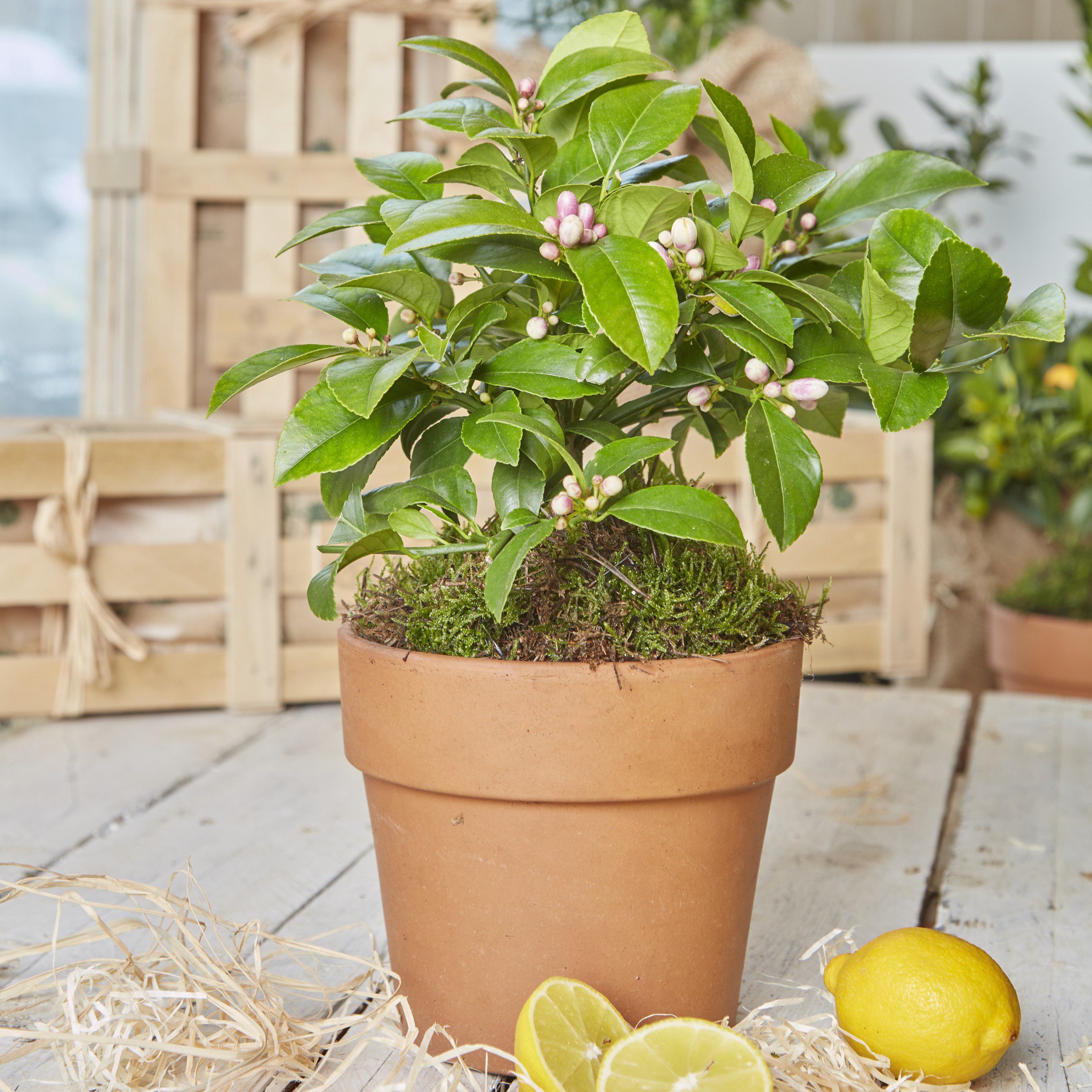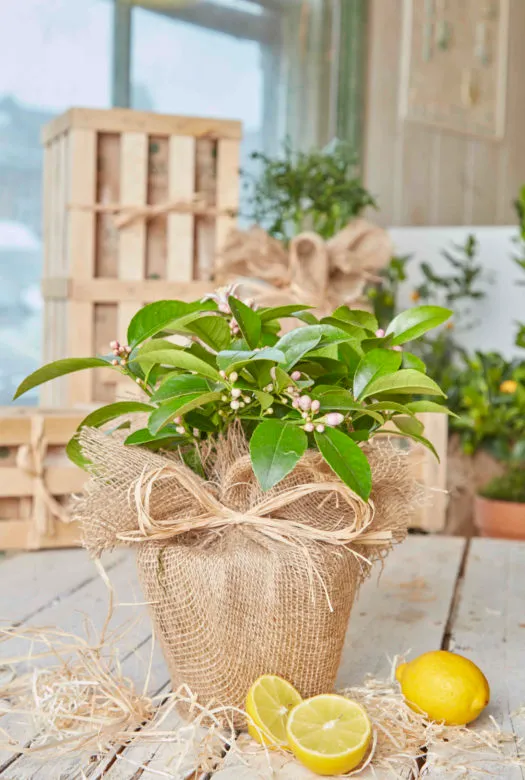Lemon Tree
A Comprehensive Gluttonous Gardener Plant Care Guide
The popular and much-loved lemon tree was one of our very first products and is still one of our bestsellers. It’s not hard to see why. Even in our notoriously changeable and intemperate climate, this pint-sized citrus will grow happily indoors during the cooler months. During the summer it will appreciate a holiday to the garden, patio or balcony.
With just a little care, this generous tree will first produce delicate white blossoms which have an intoxicatingly lemon fragrance, followed by zesty smooth lemons.
In a nutshell

Happy in a pot

Evergreen

Greenhouse

Fruit
Care Instructions

Planting
During the winter, lemon trees will be very happy indoors on a sunny windowsill or in a cool, bright location. Turn the pot regularly so that all the leaves have their day in the sun. Avoid placing your tree on top of a radiator as they are not big fans of central heating! During the hot summer months, move your lemon tree outdoors into a sunny spot
When your lemon tree begins to look pressed for space, it is time to transfer it to a larger pot. This is best done at the beginning of spring.
Choose a pot one size bigger and cover the base with a layer of gravel or stones to allow for drainage. Fill the pot with soil and compost. Remove any dead or damaged roots from the base of the plant and place it in the pot.
Refill the pot around the base of the plant with soil and citrus-specific compost up to the top. Press the soil down lightly around the plant and water well.

Watering
Water your lemon tree well in the first few months, and more frequently during the summer, especially if the weather is particularly hot or dry. In the winter, allow the top of the soil to begin to dry out before watering.

Feeding
Treat your lemon tree to citrus-specific or general liquid fertiliser regularly throughout the summer, and particularly when re-potting.


Care and Pruning
Lemon trees are quite self–sufficient so they require very little pruning. Pruning is best done before repotting, when you should trim off any crossing, damaged, diseased or dead branches.



Harvest
There is nothing quite like the fresh, zingy taste of an unwaxed lemon, and somehow they taste even better if you have grown them yourself.
Much like Thai lime tree leaves, the young leaves from your lemon tree can be used to impart a delicate flavour and scent to many dishes. For a subtle hint of lemon, wrap meat or fish in the leaves before roasting, or add them to olive oil or vinegar as an aromatic.
You can also celebrate your first harvest by livening up your favourite cocktail with a homegrown zesty lemon zing. Or harness the flavours of summer by making a jar of preserved lemons from our easy recipe and give your cooking a welcome lift during the bleak winter months.





